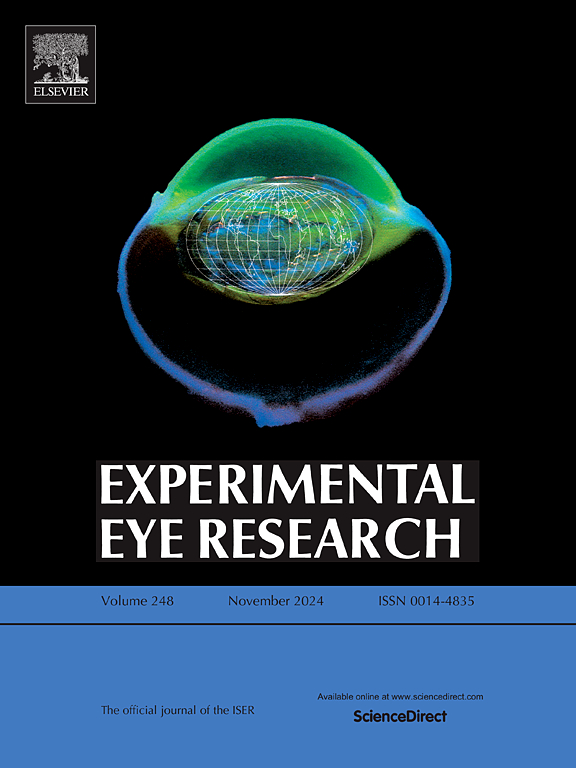PINK1-mediated mitochondrial autophagy protects lens epithelial cells by reducing ROS and apoptosis
IF 3
2区 医学
Q1 OPHTHALMOLOGY
引用次数: 0
Abstract
Cataracts are one of the primary causes of blindness worldwide; however, their pathogenesis remains unclear. Oxidative stress and apoptosis are two dominant inducers in the progression of cataracts; however, little is known about the specific mechanisms associated with mitophagy. This study aimed to investigate the role of PTEN-induced putative kinase 1(PINK1)-mediated mitophagy in cataract development. Initially, we induced a rat cataract model using sodium selenite and observed the upregulated expression of PINK1 and other autophagy-related proteins within lens epithelial cells, accompanied by apoptosis. Furthermore, the survival rate of human lens epithelial cells was significantly reduced by H2O2 treatment. However, PINK1 overexpression reduced ROS levels, allowing cells to survive. This reduction in reactive oxygen species (ROS) levels led to a decrease in cleaved caspase-3 and Bcl-2-associated X protein (Bax) expression and an increase in B-cell lymphoma 2 (Bcl-2) levels. In summary, PINK1 maintains mitochondrial functional stability and inhibits apoptosis by activating mitophagy, thus potentially playing a crucial protective role in cataract pathogenesis.

pink1介导的线粒体自噬通过减少ROS和凋亡来保护晶状体上皮细胞。
白内障是全世界失明的主要原因之一;然而,其发病机制尚不清楚。氧化应激和细胞凋亡是白内障发生的两种主要诱导因子;然而,人们对线粒体自噬的具体机制知之甚少。本研究旨在探讨pten诱导的推定激酶1(PINK1)介导的线粒体自噬在白内障发展中的作用。首先,我们用亚硒酸钠诱导大鼠白内障模型,观察到晶状体上皮细胞内PINK1等自噬相关蛋白的表达上调,并伴有凋亡。H2O2处理可显著降低人晶状体上皮细胞的存活率。然而,PINK1过表达降低ROS水平,使细胞存活。活性氧(ROS)水平的降低导致裂解caspase-3和Bcl-2相关X蛋白(Bax)表达的降低和b细胞淋巴瘤2 (Bcl-2)水平的增加。综上所述,PINK1通过激活线粒体自噬来维持线粒体功能稳定并抑制细胞凋亡,从而可能在白内障发病过程中发挥重要的保护作用。
本文章由计算机程序翻译,如有差异,请以英文原文为准。
求助全文
约1分钟内获得全文
求助全文
来源期刊

Experimental eye research
医学-眼科学
CiteScore
6.80
自引率
5.90%
发文量
323
审稿时长
66 days
期刊介绍:
The primary goal of Experimental Eye Research is to publish original research papers on all aspects of experimental biology of the eye and ocular tissues that seek to define the mechanisms of normal function and/or disease. Studies of ocular tissues that encompass the disciplines of cell biology, developmental biology, genetics, molecular biology, physiology, biochemistry, biophysics, immunology or microbiology are most welcomed. Manuscripts that are purely clinical or in a surgical area of ophthalmology are not appropriate for submission to Experimental Eye Research and if received will be returned without review.
 求助内容:
求助内容: 应助结果提醒方式:
应助结果提醒方式:


